Our Dog Breeds List Q-R includes all the AKC breeds as well as other dog breeds from around the world that begin with the Letter Q or R.
To clarify, I was only able to find one single breed that begins with the letter Q. Please correct me if I’m wrong. Contact me and I’ll do some more research. Remember, for the most part, all the breed names listed at Dog Breeds Expert are either in English or the name is widely used in the English Speaking World.
Dog Breeds A to Z List – Starting with Q-R
Queensland Heeler
Blue Heeler (Australian Cattle Dog)

Origins: Australia
Size: Medium
Grooming: Minimal
Training: Average
Recognition: FCI: Group 1, AKC: Herding, ANKC: Working, CKC: Herding, KC: Pastoral, NZKC: Working, UKC: Herding
The Queensland Heeler (also Blue Heeler or Australian Cattle Dog) would be the ideal breed for people who want their pets to keep them young. These guys are very active and energetic. Bred to contain large herds of cattle en route to market, they bring wayward cattle back into line by nipping their heels, which is how they got their name.
They need to be taken out for a good run every day, for at least an hour, as well as room in a big back yard to play around in. This means that they are not suitable for apartment living, nor an urban or city environment, unless they can get enough exercise. The Heeler will generally be happier in a rural setting, especially on a farm with a job to do.
Rafeiro de Alentejo
Portuguese Mastiff
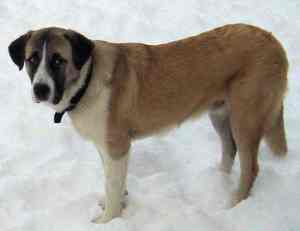
Origins: Portugal
Size: Large to Giant
Grooming: Average
Training: Time Consuming
Recognition: FCI: Group 2, AKC: FSS, UKC: Guardian
According to the American Kennel Club, the Rafeiro do Alentejo is a Portuguese breed of livestock guardian dog. It is named after its area of origin, the Alentejo region of southern Portugal. It is recognised by the Clube Português de Canicultura, and was definitively accepted by the Fédération Cynologique Internationale in 1954.
These dogs were originally used in packs as hunting dogs for big game, then as a guard dog for property and livestock, for example watching sheep and cattle. They often worked alone, and would defend their herd against any intruders.
In modern times their numbers have dwindled as natural predators have declined and farming practices have changed.These are now rare dogs.
Rat Terrier
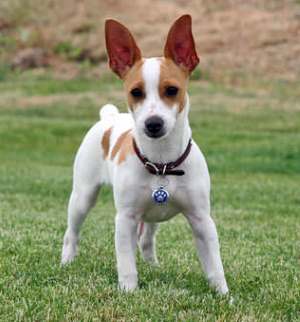
Origins: The United States
Size: Small
Grooming: Easy
Training: Average
Recognition: AKC: Terrier, UKC: Terrier
A breed developed in America originally for controlling rodent infestation on farms in the 1920s to 1940s. Their usefulness declined after the 1950s, but a core of breed enthusiasts made sure this Terrier had a future. Now popular as a companion dog, the Rat Terrier is friendly, playful and affectionate.
This is a good-natured breed that is naturally inquisitive, and they love games that simulate them having to find something – a result of their breeding to find and kill rats. They have a strong prey drive, and will chase any small animals they come across. They should not be trusted with small family pets such as mice, guinea pigs, gerbils or rabbits, for example.
Redbone Coonhound

Origins: United States
Size: Large
Grooming: Easy
Training: Average
Recognition: AKC: Hound, UKC: Scenthound
Bred originally in the Southern states of the USA, the Redbone Coonhound was developed to hunt Raccoon, but has also been used to track and hunt wild boar, cougars and bears. This is a calm, amiable breed that is at home in a family situation, but is probably better suited to living in the country rather than the city.
This is quite a loud dog, ready to bark at anything with it’s distinctive yowl. The Redbone uses this bark during hunting to alert the hunter as to the dog’s position. Once the dog has an animal either up a tree or cornered, the bark changes to a very distinctive ‘bay’ that is quite different to its normal bark.
Redtick Coonhound
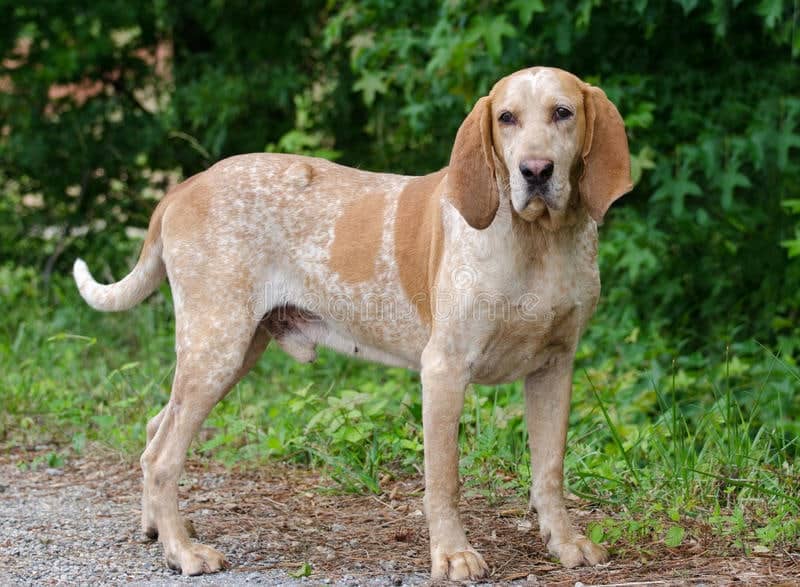
Origins: United States
Size: Large
Grooming: Easy
Training: Average
Recognition: AKC: Hound, UKC: Scenthound
The Redtick Coonhound (more correctly called the English Coonhound) was bred from English Fox terriers in America, to hunt fox and raccoon. This is a calm and amiable hound at home, but dedicated and intense hunter once a scent is detected. Also referred to as the American English Coonhound by the American Kennel Club.
Rhodesian Ridgeback or African Lion Dog
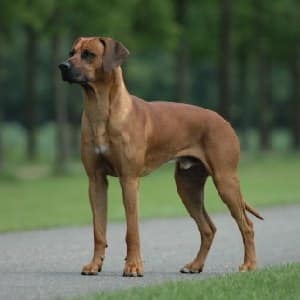
Origins: Zimbabwe
Size: Large
Grooming: Easy
Training: Time Consuming
Recognition: FCI: Group 6, AKC: Hounds, ANKC: Hounds, CKC: Hounds, KC: Hounds, NZKC: Hounds, UKC: Sighthounds & Pariahs
The Rhodesian Ridgeback is a large, powerful and athletic hound, originally from Rhodesia (now Zimbabwe) in Africa. These dogs were originally bred to protect the early white settlers in Africa, and to act as hunting dogs, particularly for hunting lions. They are also known as The African Lion Hound, for this reason.
The Rhodesian Ridgeback is NOT an easy dog to train. They need firm and clear instructions, and most of all consistent training. This breed is intelligent, with an independent streak and a quirky sense of humor. They will test you, to see if you stick to your guns with your commands, or whether you eventually give in.
You can’t be harsh or get physical with a Ridgeback, as they will basically shut down and ignore you. For this reason, a Rhodesian Ridgeback is better suited to an experienced dog owner. It is not really an ideal “first” dog, unless you are prepared to spend a lot of time in training and exercising the dog.
Rottweiler
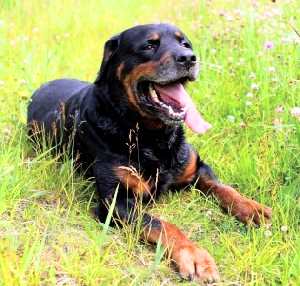
Origins: Germany
Size: Giant
Grooming: Easy
Training: Average
Recognition: FCI: Group 2, AKC: Working, ANKC: Utility, CKC: Working, KC: Working, NZKC: Utility, UKC: Guardian
The Rottweiler is an intelligent, compassionate animal, despite their sometime generalization in pop culture suggesting that they are mean attack dogs. Known especially for their loyalty, Rotties are devoted to their owners, and will defend them with their lives.
Rottweilers are known to pack a punch. They are famous for their exceptional strength. The extra muscle power they wield is particularly helpful while working as it makes them capable of herding animals of various sizes, even cows! The intimidation factor they bring to the table can frighten people, though, so it’s important to make sure they know the dog is not a threat.
Russian Toy or Russkiy Toy
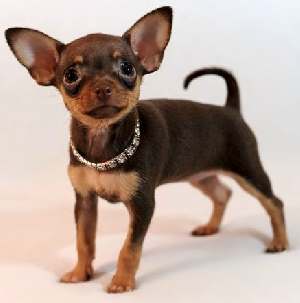
Origins: Russia
Size: Tiny
Grooming: Easy
Training: Average
Recognition: FCI: Group 9, UKC: Companion
Loyal, cheerful and always ready to play, this little Toy is one of the smallest dog breeds in the world with some standing at a teeny tiny 8 inches tall. Due to his size, this tiny dog is suitable for life in an apartment or flat. However, he does still need exercising and daily walks along with his favorite past-time…playing!
He adores human company and you’ll probably find that he doesn’t want to leave your side too much as he dislikes being too far away from his “pack”. He gets on with children and will bond with everyone in the family – no matter what age they are.
Russian Tsvetnaya Bolonka
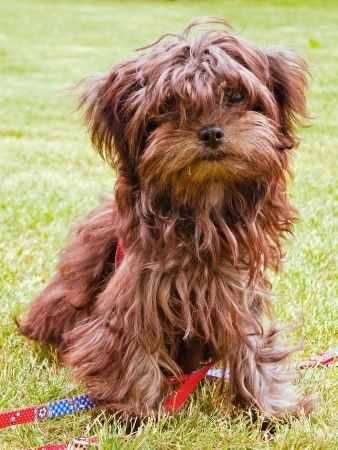
Origins: Russia
Size: Small
Grooming: Time Consuming
Training: Average
Recognition: Russian Kennel Federation
According to the American Kennel Club, Russkaya Tsvetnaya Bolonka translates to “Russian Colored Lapdog.” Bolonki were originally bred to be the ultimate house pet for apartment living. Sweet, loving, intelligent, and willing to please, he is friendly to all and shows no sign of aggression.
Spirited, yet easy-going and sociable, the Bolonka is great with children. Although they are quick to alert you to anything unusual, they will not be a constant barker as long as they have early behavior training.
Russian Wolfhound or Borzoi

Origins: Russia
Size: Large to Giant
Grooming: Average
Training: Average
Recognition: FCI: Group 10AKC: Hoound, ANKC: Hound, CKC: Hound, KC: Hound, NZKC:Hound, UKC: Sighthound & Pariahs
The Borzoi dog breed originates in Russia, and is a tall elegant dog of the sight hound group. Also once known as the Russian Wolfhound, the Borzoi was bred to be fast enough to catch a wolf, and then tough enough to bring it down. Of course, one dog could not do this alone – they generally hunted in a small pack of 2 or 3, pinning the wolf for long enough for the hunter to kill it.
Like other dogs of the sight hound group, the Borzoi dog breed was developed to chase something else that runs away from them. This innate desire to chase will cause a Borzoi to go after most cats and small dogs, unless they are introduced to them at a young age.
This is a gentle and calm dog breed, which has a natural respect for humans. They will walk around in a careful and elegant manner, with an air of sophistication and a regal bearing. Although bred for speed and endurance, they love lying on a sofa and playing the couch potato.
Russo European Laika
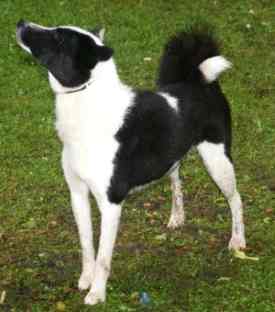
Origins: Russia
Size: Medium
Grooming: Easy
Training: Average
Recognition: FCI: Group 5
Russo-European Laika is the name of a breed of hunting dog that originated in the forested region of northern Europe and Russia. It is one of several breeds developed from Laika dogs of the Spitz type. The Laika itself dates back to a breeding program started in 1944 in Kalinin (now Tver) Province.
Did I Miss a Breed?
With so many dog breeds in this world, there is a good chance I may have missed one from our dog breeds list Q-R. First of all, I will apologize for that omission, especially if your dog was the one I forgot! Secondly, won’t you take the time to send me a quick note, letting me know what dog breed should be on this page?
I sincerely appreciate your time and will get the breed information up as quickly as possible.
Thank you for reading Dog Breeds List Q-R , and just click on the links below to go to the lists for P or S.



